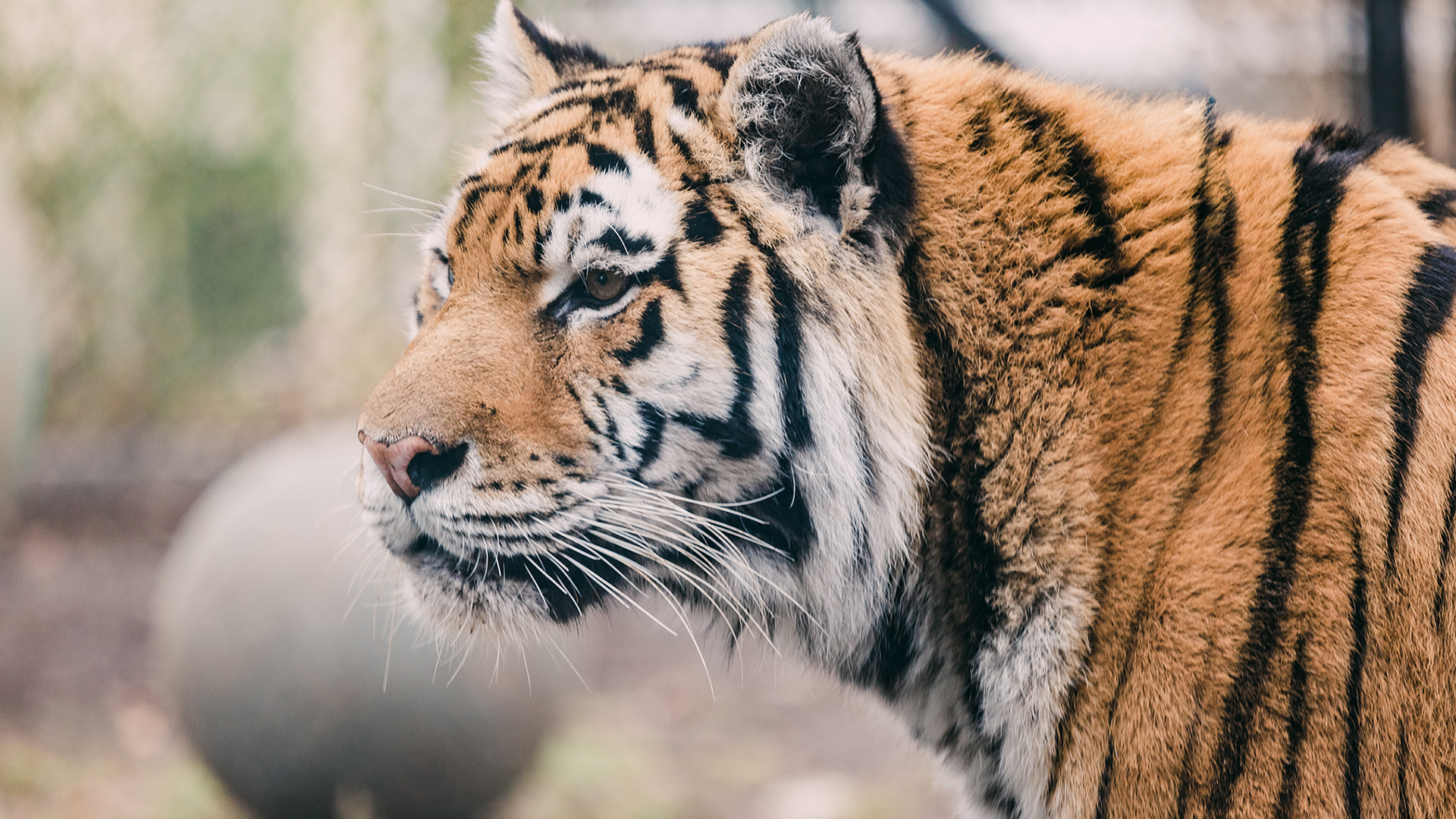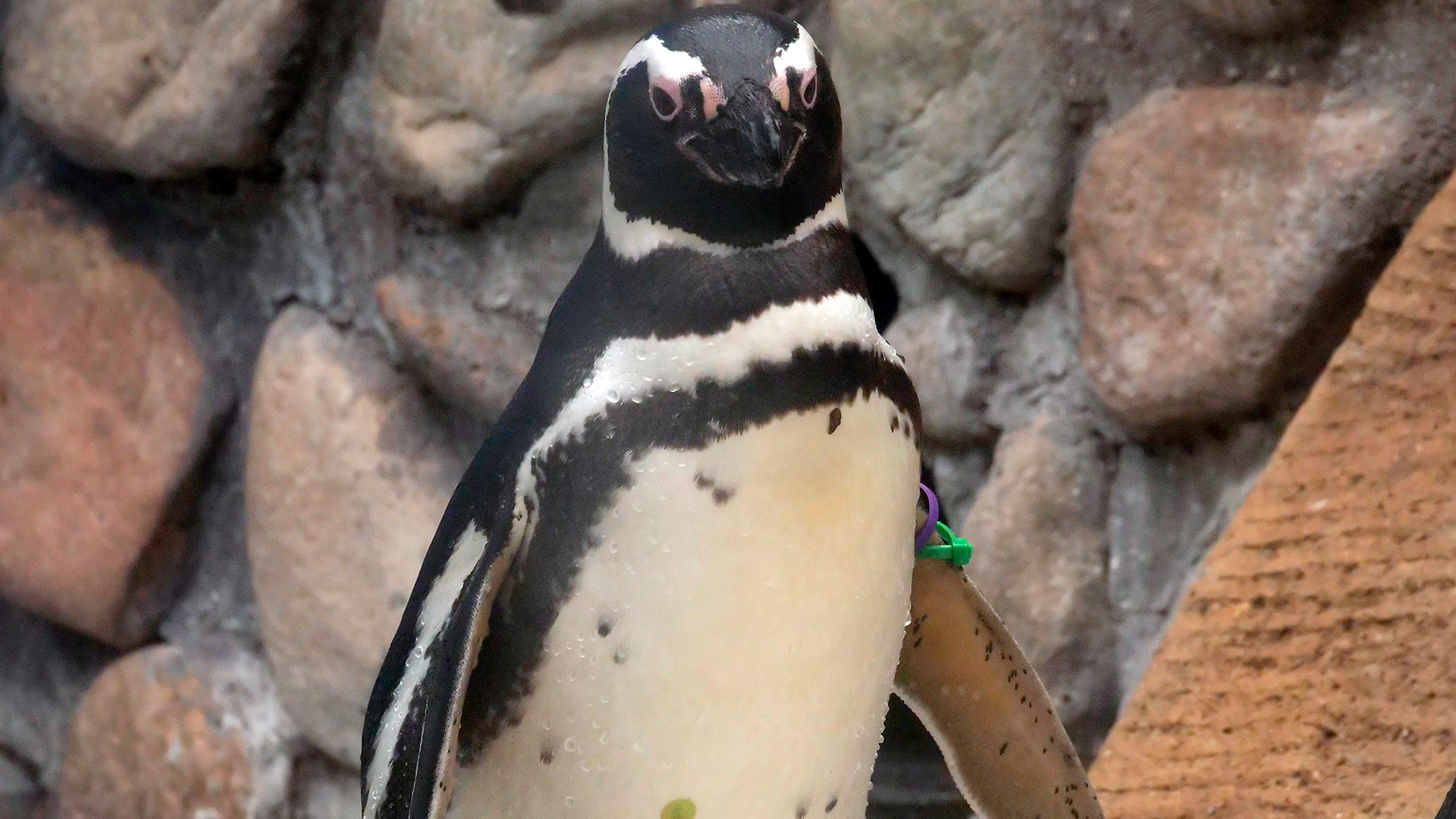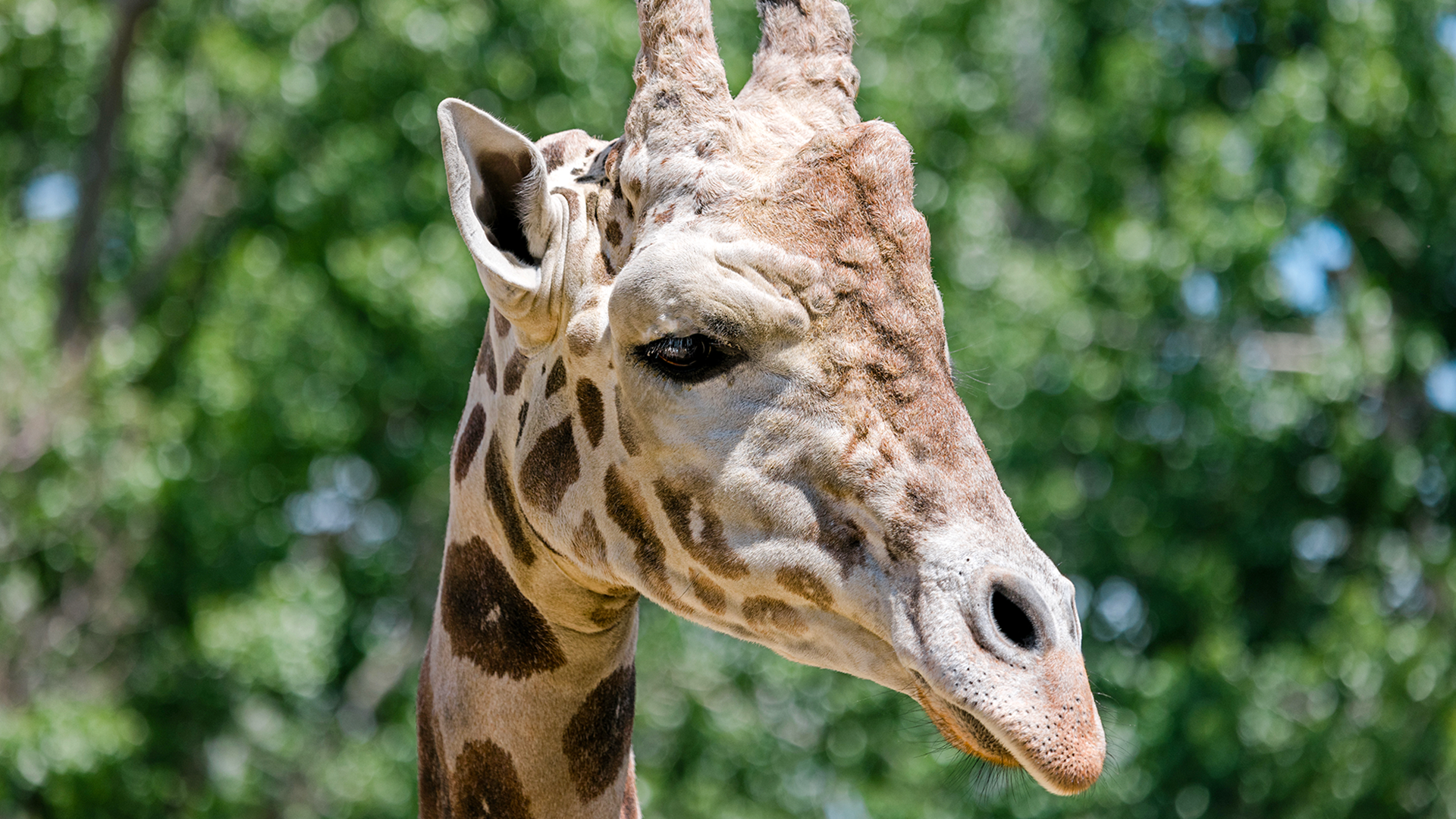Bet you can tell the difference!
This African antelope exhibits one of the most extreme examples of sexual dimorphism, or the difference in appearance between males and females. Females are about half the size of males, hornless, and a rusty brown color with vertical white stripes. Males have large spiral horns and a shaggy greyish-brown coat.




